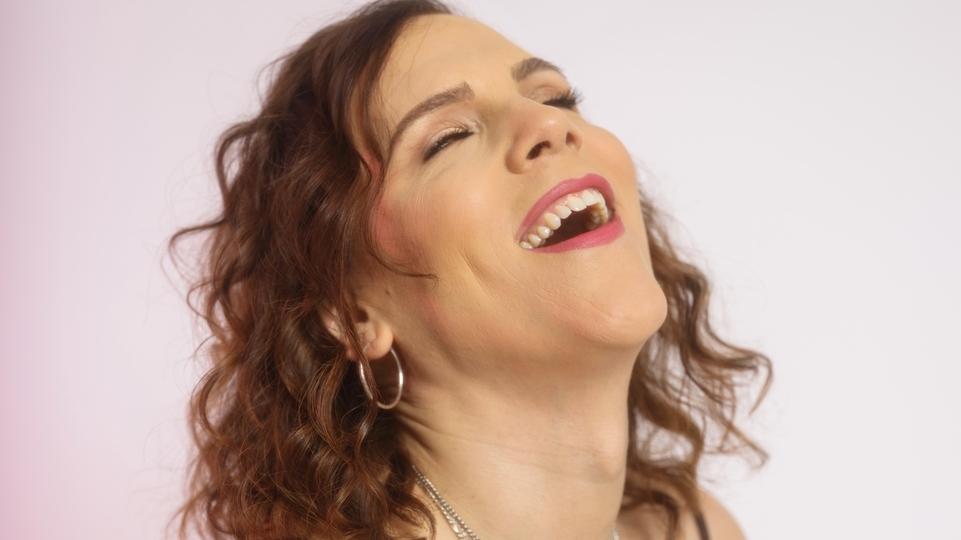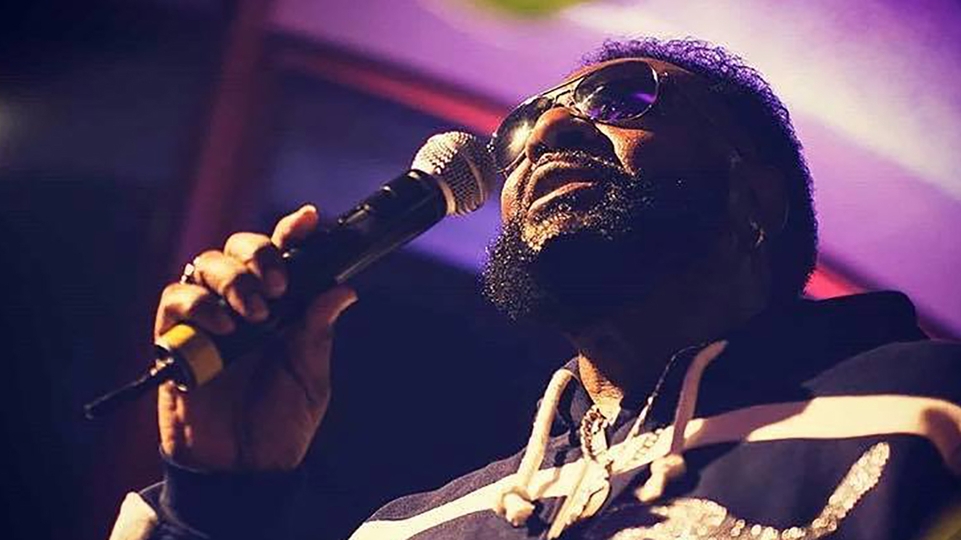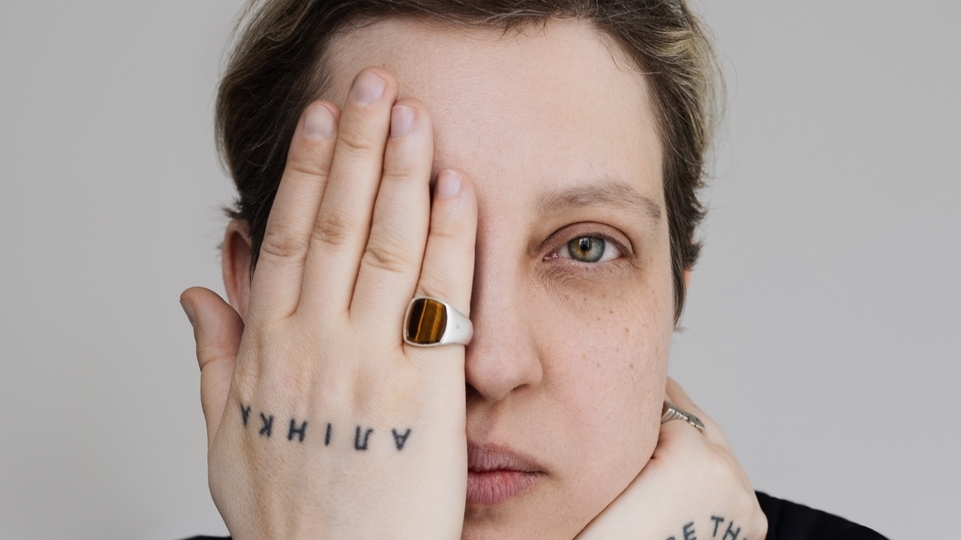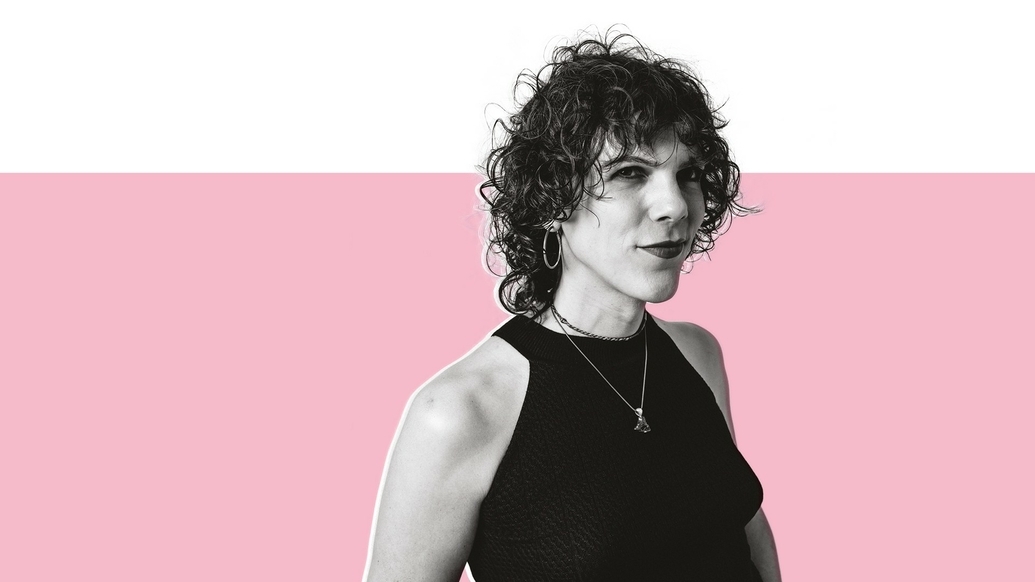
Eris Drew: brighter days
Inspired by the Midwest American raves that first got her hooked on dance music, Chicago’s Eris Drew wants to bring a psychedelic communal energy and eclectic musical style to the dancefloor with her DJ sets and Motherbeat events. We meet her in Berlin to talk about breaking club conventions, turntablism and personal empowerment
Autumn has arrived in Berlin, all bright and crisp. Eris Drew opens her windows and the air cuts through the scent of lavender inside. There’s a bunch of it dried and wrapped in black paper: she was gifted it with her partner, DJ and producer Octo Octa, at Amsterdam club De School.
They have been igniting dancefloors across the world together lately, and will see out the year with shows in Australia, Taiwan, Japan and China. It’s all happening under the banner of T4T LUV NRG, their label and collaborative outlet, celebrating their love for each other as trans women and for house music. Last year, they released the joint ‘Devotion’ EP on similarly celebratory label Naive — five tracks of uplifting house grooves and breaks which, much like themselves, are tinged with acid and romance.
Few DJs have had a rise to prominence quite like Eris Drew in the past couple of years. A queer trans woman in her early 40s, she came up as a DJ in the mid-’90s in her home city of Chicago, and in the underground house and techno scene in the American Midwest. By 2017, Eris had been DJing and raving for over 20 years, but outside of her network — including her own party, Hugo Ball, at Chicago club Smartbar — few knew who she was. At that year’s Movement festival in Detroit, an annual pilgrimage for American house and techno diehards, her DJ set at queer party Club Toilet changed all of that.
When we meet her, Eris is relaxed in a hoodie, denim shorts, and personalised jewellery: she wears a beaded bracelet that spells out PLUR, the classic rave affirmation of Peace Love Unity Respect. Tumbles of wavy dark hair frame her deep, bright eyes, which flicker over her desk. There are little objects arranged next to her turntables — a loose jacket patch of a psychedelic mushroom here, a pink crystal there — and each has its own story, which she tells us in her gentle way, weighted with affection. These mementos give Eris a sense of the familiar in a life of constant motion. She’s been on the road for the last two years. Now, it’s time to reflect, and she wants to go back to Club Toilet.
In that dark room, filled with just a couple of hundred people, she spliced soulful R&B harmonies and jungle breaks into ’90s UK garage basslines and deep house grooves; all amplified by the drama of her gestures, pumping out breaks with full-body twists and singing each vocal hook as if it were her own. Those in the crowd who didn’t know her were stunned, and those who did know her just listened to the praise and mirrored it. We knew that Eris Drew had become our new favourite DJ. She met her now-manager soon after that party and several months later, she travelled to Europe for the first time.
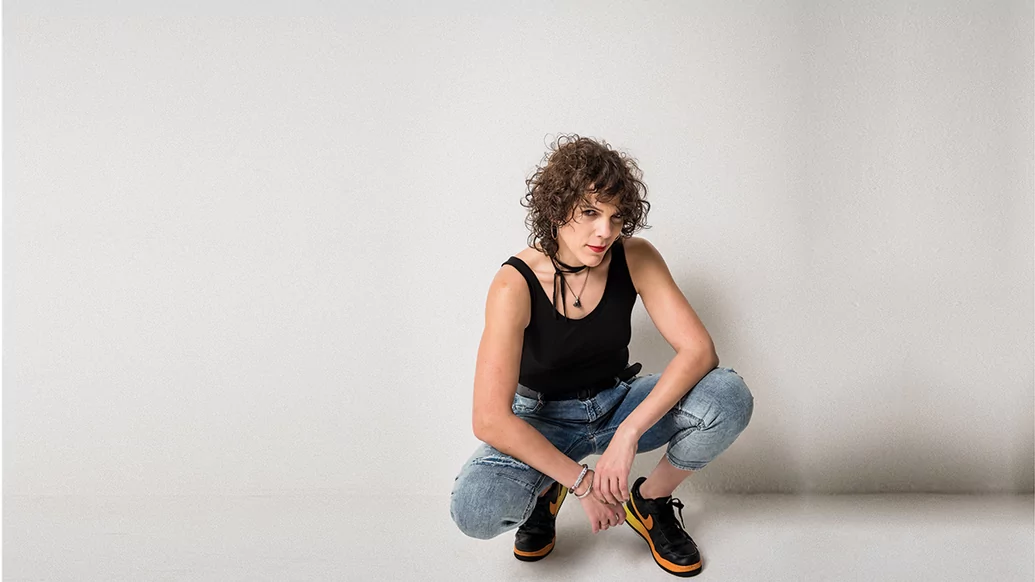

“My sound is rooted in an intense energy. I play pretty music, but I play powerful music. I can’t be less than loud.”
It was the beginning of an intense new life — she went from a couple of dozen US shows in 2017, to nearly 200 shows and counting in 2018 and 2019, from Glastonbury Festival in the UK and Unsound in Poland, to Dimensions Festival in Croatia and Primavera Sound in Barcelona.
“I was playing small, home-grown, not-for-profit parties, and suddenly, I’m trying to navigate the very sophisticated European club scene and festival circuit,” she says, as she lights a scented candle and rolls a joint. She’d never played on a festival stage before and, in those early days, she often had little control over the technical set-up. “I’d been DJing for so long by that point and I thought, ‘Oh my god, I don’t even know if I can do this’.”
Midwest Parties
To understand why Eris felt this way, we have to consider the Midwest. There are fundamentals to her DJing that have grown out of a hyper-specific lineage of sounds, techniques and attitudes. With its close-knit crews of ravers, artists and promoters, these Midwestern parties are characterised by imaginative DIY aesthetics, skilled performers who grew devoted followings long before social media, and deep musical connections to ecstasy and psychedelics. DJs like Carlos Souffront, Mike Servito and The Black Madonna made their name in this scene, at parties like Detroit’s No Way Back, with its raw acid techno and hardcore fanbase. Short shrift is given to dilettantes; when you’re in it, you’re in it for life.
At these parties, the soundsystem rules. Early flyers would often advertise the soundsystem alongside the DJs, with details of how many watts the system had and florid descriptions of how loud it could be. (It brings to mind American techno artist DVS1’s custom Wall Of Sound, which was built in 2015 but inspired by this scene and era.) As Eris has travelled, she’s seen a preoccupation with high-spec club soundsystems that partially draw their aesthetics from audiophile listening bar culture, which has more stripped back and subtle arrangements. This is as much a philosophical concern as a technical one.
“My sound is rooted in an intense energy,” she says. “I play pretty music, but I play powerful music. I can’t be less than loud.” Her rebellious spirit plays up sometimes, and she might push a soundsystem harder than it’s perhaps been prepared for, but “I’d never do anything disrespectful like blow a soundsystem,” she insists. This is deeper than an ego flex. The visual metaphor is clear to her. “By ‘refining’ the soundsystem — placing the tweeter over there, the subwoofer over here, the fancy Funktion-One over here — they’re literally deconstructing the culture, making the sound less ecstatic,” she says.
“Steve Reich once said that if he could have his way with stage placements, he’d have all the musicians sit on top of each other. He wants the singularity of the sound, and I totally get it.” She closes her eyes and speaks slowly. “Humans filter out so much, so you want to focus in order to be transformed,” she says. “I want the soundsystem to be as prominent as the DJ, maybe even more so.”
A nostalgic smirk flickers across her face. “Every soundsystem that I heard in Chicago was made to crack you open. Some of them sounded great and some did not, but you would still rock the party,” she says. Hugo Ball co-founder Justin Aulis Long once told her something illuminating: “‘When you’re playing music for people, you’re playing the soundsystem, not the records’,” she remembers. “If the conditions aren’t ‘perfect’, then pick the records that are going to translate and put pressure on that soundsystem in ways that you know how.”
Eris only plays vinyl, and she plays hard. Instead of setting the pitch before she cues up a record, she “rides the pitch” by throwing the record in and adjusting the pitch from there. This involves a lot of physical pressure, but Eris sets up her decks on top of cinder blocks to withstand the force. “I’m not trying to be restrained and delicate,” she says, “I’m up there rockin’ and rollin’.” To ride the pitch, she needs a tough, hyper-reactive mixer — she uses the Pioneer DJM-900NXS2. “I’m doing these very quick gestures, not this slippery, engineered style of mixing that a lot of house and techno DJs like.”
Before she came to Europe, Eris admits that her DJing hadn’t changed much in 20 years, but she’s become more confident and accurate in her mixing in the last year or so, developing playful quirks into prominent techniques. One is that she blends recordings of bird-song and trains into her mixes, using them as rhythmic tools to disorientate yet power the dancer, the noise blazing through the soundsystem like wiggles of modular synthesis. More recently, this has become a full-on embrace of turntablism — but true to her roots, this is an old trick, honed over time.
Eris bought her all-time favourite mix, Terry Mullan’s ‘New School Fusion Vol. 1’, from the back of a truck outside a rave in ’94, and it had such a profound impact on her that she’s “based her entire sound largely on this one tape”. The mix sees Mullan blend old and new acid, house, disco, funky electro and hardcore, using hip-hop turntablism. Listening to it today, it’s clear that the spirit of Mullan’s style in this period — of playful scratches and melodic vocal bursts, slowing down records mid-mix to emphasise the raw, bright sounds — lives on in Eris. Her 2019 compilation-and-mix ‘Raving Disco Breaks. Vol. 1’ is a love letter to this.
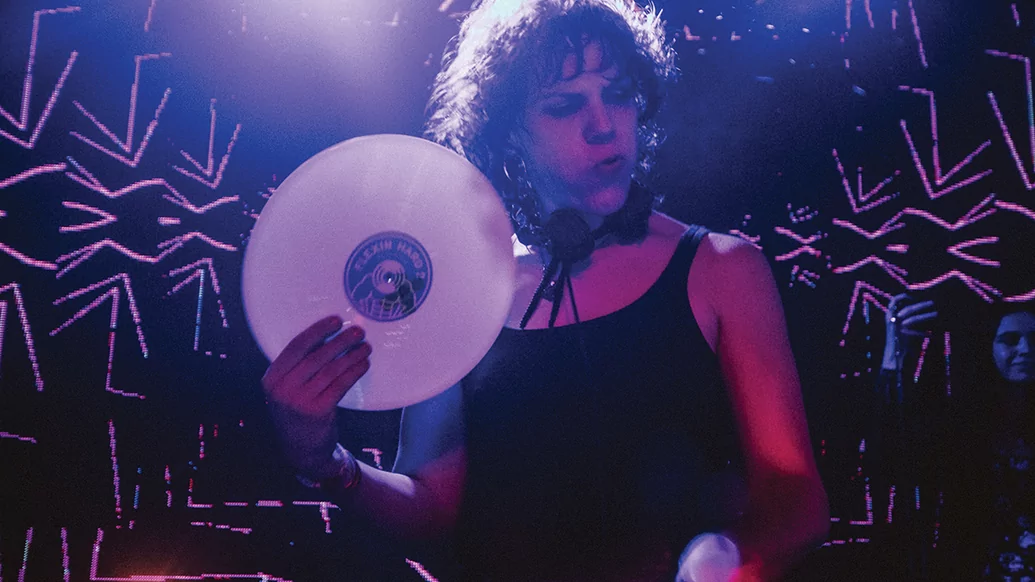

“I thought, ‘What if we harness the narrative potential of doing drops and scratches? Taking that hip-hop turntablism technique and using it to create statements about our community, personal empowerment, and psychedelic ideas like transcendence?’”
Eris was often drawn to dance music that was deemed too unrefined to be part of the house scene proper. Mullan “wasn’t exactly respected for [the New School Fusion sound], at least among the serious house heads,” she remembers. “I mean, people weren’t all-out dogging Terry — he was one of the most popular DJs of the time! — but they did talk behind closed doors.” Then there were the afternoon “drive time” new dance mixes on local radio stations. With their upbeat vocals, Europop hooks and quick-fire jingles blasted out mid-mix, she loved how unabashedly fun they sounded, but they were viewed as tacky by purists. “Once you get Carl Craig making these deep collage records, people didn’t want to hear someone shouting ‘Yeah, boy!’ all pitched up on a ‘cheesy’ beat anymore,” she laments.
She understands the protectionist ethos of the underground house music scene she comes from. Having music that came from marginalised people be commodified and moved out of the community can be jarring. “People want to try to hang onto their original values and I don’t have any issue with that,” she says with seriousness, “but every artist has to decide whether they’re going to have a classic approach or a new, radical approach. You can pick the traditions you follow and the ones that you’re going to break.”
On how she can create a DJ set that communicates these ideas, she is animated, her hands twisting in the air as she rattles through her ideas. “I thought, ‘What if we harness the narrative potential of doing drops and scratches? Taking that hip-hop turntablism technique and using it to create statements about our community, personal empowerment, and psychedelic ideas like transcendence?’” she says. “When you can turn a radio drop, a cheesy phrase, into a rave affirmation? As a queer, trans, mystical person, that becomes a really fascinating playing field. It’s not a purely intellectual exercise, either — we find it just as uncanny and fun to drop a ‘Yeah, boy!’ into the mix in the same way.”
The Motherbeat
There are other things that Eris has let go of, made peace with. While being driven home from a rave one morning in ’94, as her sweat cooled and high fizzled, she heard a deep, rhythmic pulse. It was as if the rave was still happening all around her. As she turned to her friend, her friend looked at her and said, “It’s the Motherbeat”. She could hear it, and she understood it, too. This moment changed Eris’s life forever.
The Motherbeat has come to symbolise many things for Eris. She describes it as the healing energy contained within music, and the experience of being in an ecstatic trance while dancing. There’s an urgency to the Motherbeat that unlocks and heats the body, connecting the body to an energy that feels ancient and natural, yet also hyper-specific and difficult to describe.


The Motherbeat isn’t a genre term per se, but it does describe a force that Eris considers feminine — of a soaring, tender beauty. It’s really nothing new, she insists. This is a feeling that’s been described in myriad cultures by myriad names. She just happened to hear it one morning and gave it a name of her own.
As the mid-’90s rolled on, Eris’s bond with house music intensified. Though ecstasy and psychedelics played significant roles, she doesn’t describe these years as particularly hedonistic, or marked by recklessness, but as a time of intense emotional clarity. She realised that there were things about herself that she could no longer deny. She came out to her partner and close friends as a trans woman, and took the name Eris, after the Greek goddess of chaos.
Ever since her transition to live her authentic life, she sees her relationship to dance music as more authentic, too. Before her transition, she remembers playing with a focused and sometimes nervous energy, disassociated from herself and guided by the various orthodoxies within the male-dominated house scene: don’t touch the records too much, stick to one style, and perfect those long, smooth blends. She didn’t dance and was afraid to make mistakes. As she began her transition, the way that she enjoyed music privately became public. She danced and danced and danced as she played her records, imbuing her rapid, tactile mixes with a kinetic energy that she’d felt she couldn’t express before. She had cracked herself open.
“I realised that I had edited every little thing about myself,” she says, thinking of her closeted years. “I needed to lean into my full radiance, so that meant that every last bit of my record collection that I love — Europop, freestyle, trance that wouldn’t have been okay to play in a Chicago house club in ’95 — was okay for me to play again.”
Eris leans towards a small stack of vinyl on the floor next to us. There’s a record that she wants to play that expresses a lot of her ideas. She pulls it out of its black card sleeve and flips it over carefully, like a prized relic. It’s a 12-inch by Dutch progressive house duo Trancesetters, and her favourite track on it is called ‘The Secrets Of Meditation Remix’. The tiny price sticker has faded, but you can still make out that it was released in ’94. She was introduced to this record by a friend of Mystic Bill, a DJ of fabled status to psychedelic American ravers. Eris drops the needle and rolls another joint.
The house beat builds up, rugged and raw, with hollow polyrhythmic drumming and a discombobulated vocal riff that sounds like someone speaking in tongues. The kick-drum and hissing snare give way to a melodic synth tone that morphs into a soft drone, but the rhythmic pace never lets up. Eris is grinning. “I’ve charged this record with so much power,” she says, “I can’t help but think of all the times I’ve played it.” She looks over at the bunch of lavender — the last time she played this track was at De School, with Octo Octa.
Some years ago, she started reading about how ancient rituals used movement and sound to create communal, spiritual experiences, to find out if there were formal attributes that could be translated into her style of house music. The three attributes that she connected with were drone, percussion and voice. “Drones are part of almost all ecstatic traditions, but when I first started, I was like, ‘What the heck does drone have to do with dance music?’” she says. “They almost seem like the antithesis of it. But then I started listening to my records through this lens and realised that I could play some examples,” pointing to the Trancesetters record.
She found that many of her records have drone-like frequencies, either sustained throughout the track or modulated in timbre rather than pitch, in ways that make her feel like she’s in an altered state of consciousness. She was drawn to early Todd Terry dubs and hardcore-adjacent rave tracks for their unique use of frenetic percussion, and saw a connection between the spontaneous poetry of psychedelic healers and the spirit-like voices of house music.
“When you play these vocal house records, you often don’t know who is speaking, because the person making the music is often not the voice on the record,” she explains. “They speak in phrases, or parts of phrases, put together in ways that might not make rational sense but still tell stories.” She leans into this aspect. “Language creates our reality, so if we’re going to try and have a mystical experience together, when we’re able to feel the voice in this way, it frees us.”
There is a balancing act in all of this. Eris approaches how her subculture and its music can heal people with sincerity. There is also much that she has to be sceptical of, particularly if she wants to remain contemporary and critical in her thinking. While she’s keen to use ritualistic attributes to translate the Motherbeat, she’s aware of how this can come across to an audience.
“A lot of people are turned off [by psychedelic parties] because of how New Age these scenes typically are,” she says. “They use the language and symbols of indigenous cultures and appropriate them for their own usages. When I’m looking for drones in records, I’m not looking for exact replications of indigenous forms. There are some tracks that kind of sound like a didgeridoo, and I think that’s interesting,” she suggests, “but the ones that sample a didgeridoo? Not so much.”
Her smile thins out for a moment, unimpressed. “While we may look to those cultures as a way of trying to understand what’s happening here, that doesn’t mean that [those cultures are] just there for the taking. I’d never play or host a party that would have a statue of Buddha in the corner, or project an image of the Yin Yang onto a wall, you know?”
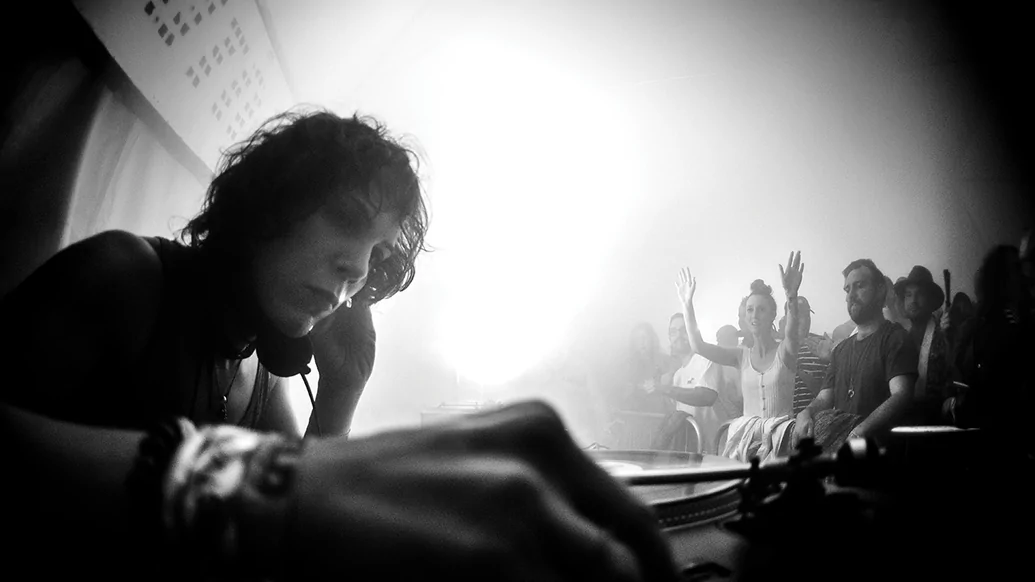

Raves vs. Clubs
The sun is still shining, so we head out for some fresh air. She and Octo Octa have been staying in this neighbourhood for only a short time. It’s an old gay area in West Berlin, near the sprawling Tiergarten, and they feel more comfortable here compared to other areas in the city. There are groups of friends drinking glasses of beer outside cafes, soaking up the heat, but Eris orders a tea. She’s not much of a drinker. When she first started raving, she was drawn to the scene’s efforts to reject elements of mainstream American life.
“America is a beer and football kind of place, and we didn’t want to do what the jocks were doing,” she says with a giggle. To our surprise, she says that she didn’t see alcohol at a rave in the Midwest for at least four years. “Alcohol brings down the [legal] heat on us, so that underground parties can’t keep going, and brings in ego-based harms,” she explains.
“Now, this isn’t to say that those early raves were idyllic. People brought their racism and sexism and all kinds of other shit with them to the parties. Taking psychedelics doesn’t turn you into some perfect human,” she says wryly, “but we thought that taking alcohol out of the equation was a really good idea to the extent that we were trying to live in an alternate culture.”
As we talk, she speaks about raves and clubs as if they are two distinct things, which begs the question: what’s the difference? Raves for Eris are not necessarily permanent or legal spaces, where the DJ is not the focal point of the room, intoxication is intentional, and harm reduction is part of the experience. The longer a rave can last, the better, but it should last at least 12 hours, to build enough heat and tiredness in the body for the dancer to let go and feel ecstatic. And, ideally, there would be little to no alcohol.
Clubs are permanent spaces with stricter times where, because the sale of alcohol is largely what funds the space, the bar is the centre of social interaction to the extent that it’s often built into the dancefloor. Eris plays clubs all around the world; she knows that it’s the standard economic model, but there’s always a pang of compromise for her. What she really wants is a rave.
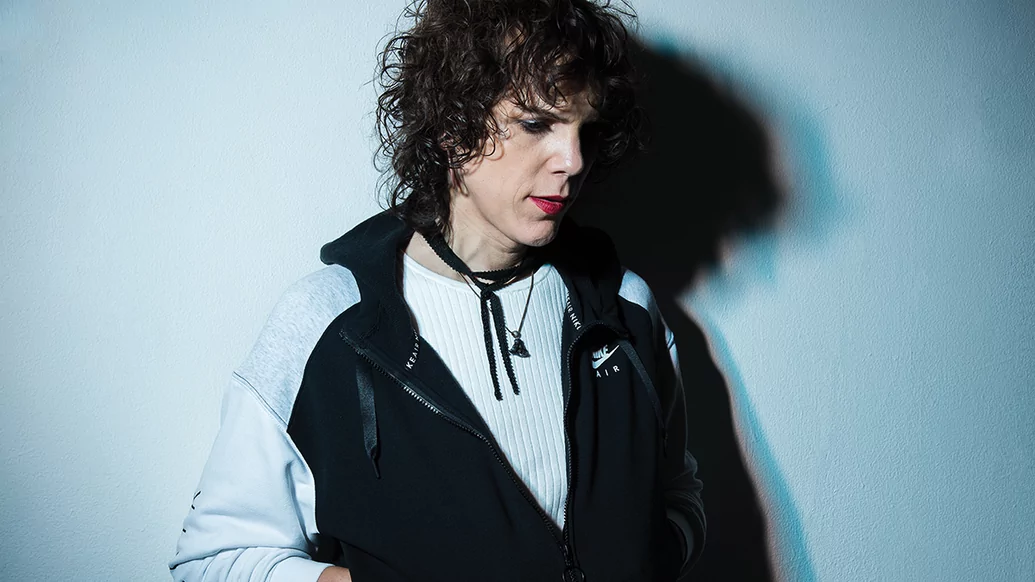

“Octo Octa and I are determined to play in places where the fight for visibility for trans people is in its infancy.”
On these points, Eris’s thinking is contemporary and relatable. Recent years have seen the wider conversation move from an emphasis on full-throttle hedonism towards more health-conscious wants, like legal, real-time methods of harm reduction, and the growth of safe space parties, where queer people, people of colour, or people who are both, can let loose in sympathetic environments. That Eris has gained so many new fans through her music and passionate online discussions shows how many ravers want to be part of a safer, more inclusive scene overall. Eris is trying to put this thinking into practise, too.
This September, Eris hosted a Motherbeat party at Berlin’s Trauma Bar und Kino, in collaboration with queer collective Room 4 Resistance. Framed as a “psychedelic rite”, it was a 12-hour party with no alcohol — instead, the bar served cold brews, tea infusions, and fresh smoothies — and the space was organised to accommodate psychedelic experiences.
The first thing they did to prepare the space was to remove as many cultural symbols from it as they could. “It’s largely impossible, because you’ll have branded drinks and an exit sign, but we still try,” she says. This was inspired by Eris’s overwhelmingly positive experiences at Seattle-based party TUF — co-run by psychedelic DJ and close friend CCL — where paintings and signage are removed from the gallery space and colourful flowers are hung from the ceiling.
Along with the soundsystem, the single point of focus was a sculpture of the sun, woven in bright colours and suspended near the DJ. The sun represents a singularity for Eris — a spiralling, mandelic-like image that people see on psychedelics — that’s always been a part of mythology. Simply put, “the sun belongs to everyone,” she says.
In her eyes, most psychedelic events try to slavishly recreate the psychedelic experience with intense lights and visuals, instead of trying to enhance someone’s actual psychedelic experience, so Eris uses certain objects and lighting to create shifting perspectives. “We’ll focus on a part of the colour spectrum, or have some kind of motion created in the room, but that’s about it,” she says. “You don’t need a big, fancy light show.”
On hand that night were a team of six psychedelic counsellors, trained to either help or just hang out with ravers who might need some company during an intense moment. Eris drew inspiration for this from the “burner” scene in the United States. Burners are most recognisable as attendees of the sprawling Black Rock Desert festival Burning Man, but she speaks about the scene as being more raw and underground than it’s historically been given credit for, and one that’s done significant work with harm reduction. It’s something that, to her, the house and techno scenes could learn a lot from.
After the more upbeat DJs finished playing, the dancefloor was cleared and covered in soft foam pads. The tired dancers lay down together, as DJs played drone and electroacoustic music by 20th and 21st century composers, like Pauline Oliveros and Élaine Radigue, at loud volumes. These last few hours of the party are crucial to Eris. They symbolise an empathetic reintegration back into normal life after an intense rave experience, in a way that’s largely absent in club culture. With others, Eris lay down and held Octo Octa, as the drones washed over them. There have been four Motherbeat parties to date, and she hopes to host more.
Last summer, while being driven with a group to an airport after a festival in Albania, Eris was involved in a serious car accident. She asked her driver, in tears, on the ground, if he thought that she’d be safe in seeking medical help there as a trans woman. He said no, he wasn’t sure, so she got on her flight, sore and worried, and waited to be treated elsewhere. The incident was deeply upsetting for her. It serves as a reminder of how the daily micro-aggressions, or even violence, of navigating public life as a trans woman can be exacerbated by life on the road as a DJ. She’s often alone, with her basic safety in the hands of strangers.
“I mean, here I am,” she says tenderly, “talking about all these experiences that we can have together outside of our normal cultural modes, and I’m having to navigate things with my ego, a constant sense of protecting myself. To shift between these two very different ways of being is intense.” She clears her voice. “Octo Octa and I are determined to play in places where the fight for visibility for trans people is in its infancy. Our golden rule is that as long as we’re not illegal in the place we’re booked to play — meaning that we couldn’t go to jail, or where trans people aren’t punished for being trans — then we’ll go.”
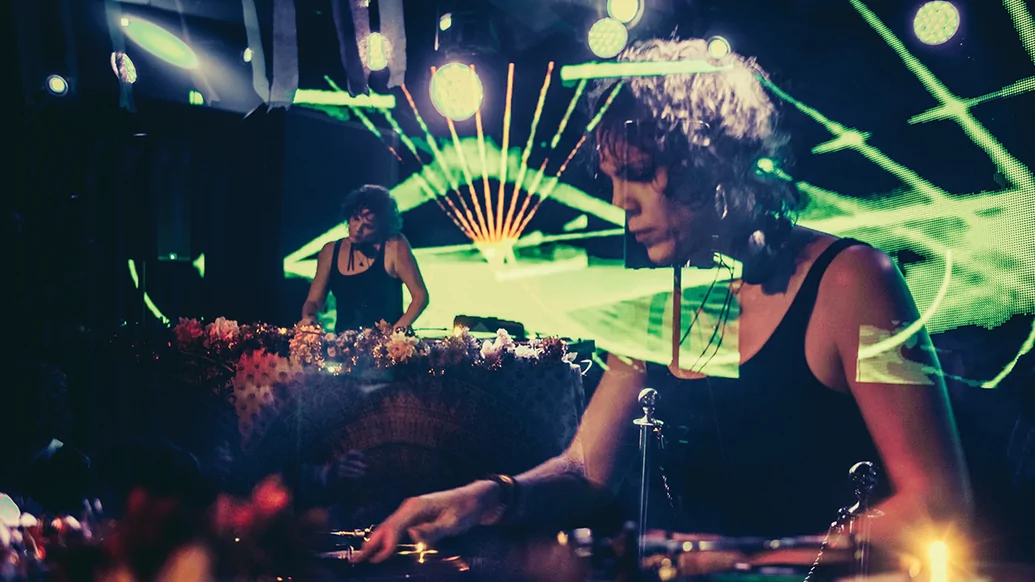

It’s hard to manage it all sometimes, but she’s connecting with more people who admire her and her work — she names artists like CCL and Paris in Seattle, Sold and Hi-Vis in Chicago, Kiernan Laveaux and Adab in Cleveland, and Russell E.L Butler in Oakland as some of her Motherbeat kin.
“[Octo Octa] said to me just the other day, ‘It’s a testament to the power of house music that we can have the experiences that we have, despite all of this’,” she says. “Forty minutes into a five-hour set, I’m there. It doesn’t matter what happened earlier that day.”
Her eyes are wide and bright again, and we listen. “I was asked recently, ‘What does this music mean to you now that you’ve ‘healed’? And I said, ‘I use it to heal every day’. It takes the harshness away. A lot of trans people are never going to come out and feel safe. Trans people’s lives are culturally limited. If you can boil it down to a single essence, the struggle for trans rights is the struggle for a public life. I am finally doing what I love, and I’m not going to let anything stop me.”

